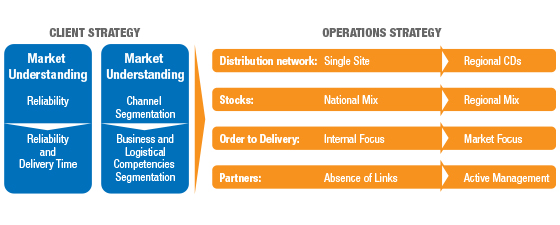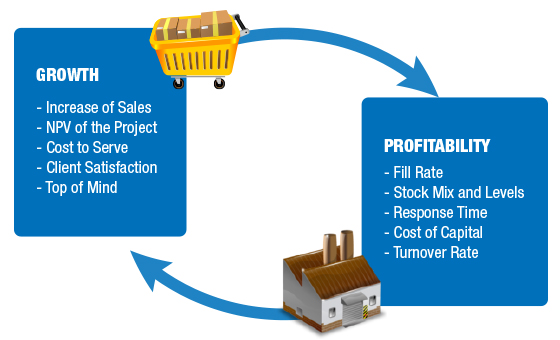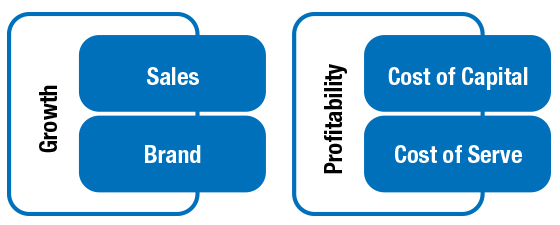INTRODUCTION
The Construction and Design industry has grown in Brazil at a rate above the GDP, achieving rates over 8.2% a year. Demand in this sector is driven by the recent ascent of the middle class and easy credit, which encourages consumption. Meanwhile, the growth goals of companies face challenges related with the lack of infrastructure, which may impact growth and profitability. Adding to the poor infrastructure, factors such as high labor costs and operational inefficiencies make logistical costs reach 20% of GDP, twice the value seen in the United States. In order to enable profitable growth, companies in the Construction and Design sector must consider all the restrictions imposed by the scenario and revise the models they use to serve the market.
This paper intends to present a success story of a company in the Construction and Design industry, which needed to align the value of the brand with the service delivered to the client and implement their plan for sustainable growth for the next five years. Throughout the paper, we will present an overview of the company and its challenges, followed by the approach taken by Sintec, which will present a methodology that integrates a client and an operations strategy with the results in terms o growth and profitability.
MAIN ACTIONS
Integrat ed Distribution Model
1. Market Alignment
- Clients Segmentation
- Purchase Drivers
2. Distribution Networks
- Movement of Stock to regional
- distribution centers
- Different transport modalities
- Optimization of primary transport
- Closer proximity to the market
- Synergies between sales channels
3. Stock
- Quantity, mix and response times
- Stock Strategies
- Regional Logistical Planning
- Stock Management Policy
4. Order to Delivery:
- Service Cell
- Customer Service Process
- Management of Indicators
- Centralization of the sequence of
the orders
5. Partners:
- Evaluation
- Management
- Development Plan
- Integration of Tools
CHALLENGE
The company in question is a leader in the ceramic coatings segment in Brazil, and it determined an aggressive growth plan for the next five years that intends to double the number of points of sale in the country and increase by 180% the current sales volume. Moreover, it intends to reflect the value of the brand in the delivery services to the final customer. Limiting factors were hindering the implementation of the plan and impacting its profitability: an increase in the cost to serve generated by bottlenecks, the complexity of operating in a single site and the need to optimize capital costs (Figure 1).
SINTEC´S APPROACH
To overcome the challenges indicated, Sintec defined a Clients and Operations strategy in an Integrated Distribution Model, divided into six different fronts, as seen in figure 2.

DISTRIBUTION NETWORKS: To serve every sales channel through a single
site (at the factory) used to generate an unsustainable complexity and the exact opposite of economies of scale. The new model determined the optimal location of the new distribution centers needed to serve the current demand and to support future demand. The integrated model must offer a closer proximity to the market, a better use of the load capacity of the primary transport and use of other transport modalities, reducing the cost to serve by 15%. In addition, synergies were identified between the sales channels that optimized transportation costs.
STOCK: Factory stock had to serve the entire demand from the different regions throughout the country. Since each region has demand preferences
for specific mixes, capital costs were not adequately leveraged and they impacted the cash flow of the company. The new model provides for stocks to be taken to regional distribution centers, allowing for the design of a regional mix that optimizes capital costs. Also, differentiated stock strategies were established per products, based on industry and variability, improving market response times and the service level indicators.
ORDER TO DELIVERY: Order to Delivery processes were poorly structured, which trumped order fluidity and swiftness, and therefore decreased the level of the service for the final customer. We designed a new structure for the processes from the generation of the order by the client, through to the final delivery, considering the time, the quantity and the correct mix. The new design of the Order to Delivery processes also enables the visibility of service indicators up to the last step, guaranteeing the management between the different stakeholders until the order reaches its final destination, in order to reflect the value of the brand in the quality of the delivery.
PARTNER DEVELOPMENT: Handling and transportation were carried out by a large numbers of partners, poorly and without processes or any management. As a result, the company received claims from the points of sale and the clients due to the countless deliveries outside the agreed deadline, with missing products or products that were not fit for use. These factors caused a misalignment between the values of the brand and the delivery services offered to final customer. In order to solve this situation, we created a partner development plan that establishes minimum performance requirements, processes, legal contracts and communication channels that guarantee the delivery standards and service levels demanded by the public from the brand.
RESULTS
Results are projected in two categories, as seen in figure 3. We expect a growth supported by service levels above the industry average. We estimate a fill rate of 95% and a better market response time. As to profitability, we expect an increase of sales around 10%. We also expect a reduction in costs to serve around 15%, in addition to an increase in customer satisfaction, turning the company into a Top of Mind in the market.

The marked growth of the Construction and Design industry, along with a market that demands increasingly competitive service levels create the need for a more robust distribution model. A strategy that enables this growth and aligns the operation with the value of the brand requires a business model that integrates the operational and commercial departments to optimize their total potential. The results expected from an integrated model do not only encompass the growth of sales, but also the profitability of the business, and they must undergo structural changes, leaving the old paradigms behind. Having identified the potential value of the business, the implementation of the model takes place in a sustainable fashion throughout the organization.
